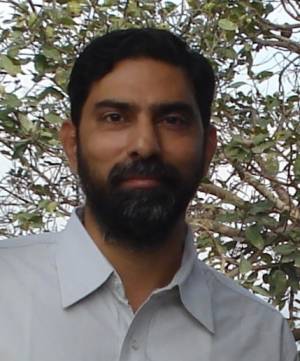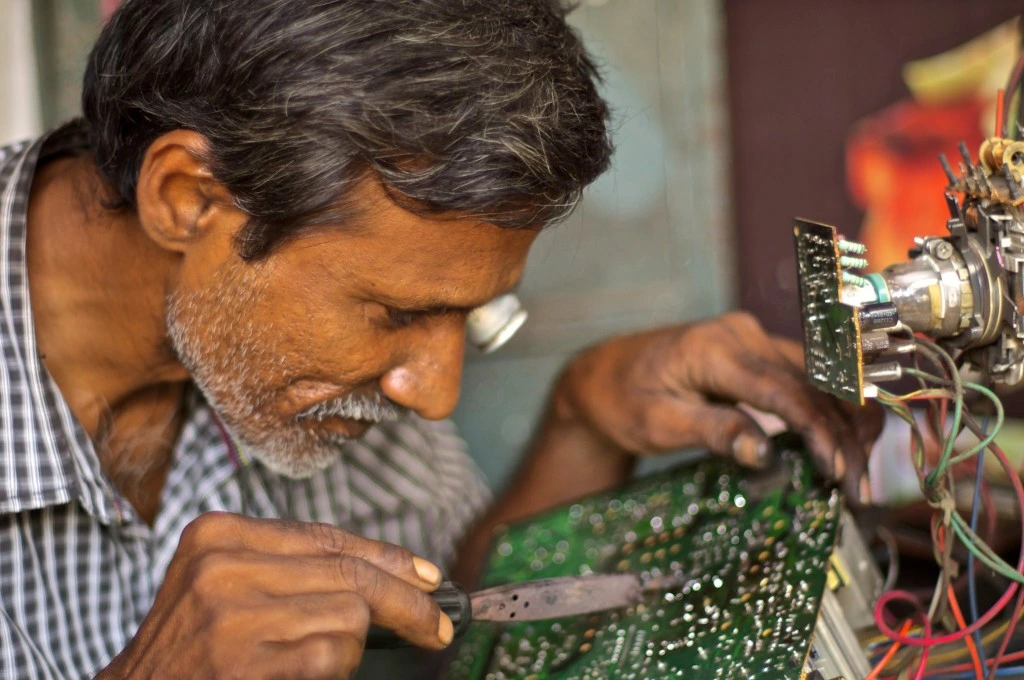As the country was grappling with the leakage of a gaseous substance from the LG Polymers plant that killed 11 people in Vishakhapatnam, a shocking fact came to light. For at least some time, the plant had been operating (and was probably still at the time of the gas leakage) without the mandatory environmental clearance (EC). LG Polymers admitted this in an affidavit submitted to the State Environment Impact Assessment Authority on May 10, 2019.
The Environment Impact Assessment Notification 2006, brought out by the Ministry of Environment, Forests and Climate Change (MoEFCC), is a key piece of the legal regime for environmental management in the country. It provides a list of projects and activities that must obtain a prior EC, that is, no work—not even construction, let alone operation—can begin without such EC. The notification also lays out the procedure to obtain such an EC, which involves:
- Carrying out an Environment Impact Assessment (EIA) of the project
- Creating an Environmental Management Plan (EMP)
- Holding a public hearing in the area in which the project will be constructed
Based on these, the Expert Appraisal Committee (EAC) recommends whether an EC should be granted or not, and if yes, under what conditions.
When a plant has been operating without an EC, like LG Polymers, it is highly likely that it would not have done an EIA or a public hearing, and would not have an EMP in place.
Not only does the EIA Draft 2020 make it easier for businesses to obtain environmental clearances, it also ignores certain basic environmental management principles.
The affidavit given by LG Polymers was a part of an application under a 2017 Notification of the MoEFCC which provided an amnesty scheme for regularisation of projects which had started operation without an EC. An amnesty scheme of such a kind is always an incentive for people to violate the law, because they feel that they will be able to get the violations condoned, with at most some monetary fine. That is why this amnesty was limited only for a period of six months. Unfortunately, the MoEFCC now plans to make such an amnesty scheme permanent.
Related article: The environmental movement has made a few mistakes
In March 2020, the MoEFCC brought out the draft of the new Environment Impact Assessment Notification (EIA Draft 2020). If this is notified by the MoEFCC, it will replace the current EIA Notification 2006. Not only does the EIA Draft 2020 make it easier for businesses to obtain environmental clearances, it also ignores certain basic environmental management principles. In order to bring the EIA Draft 2020 in alignment with environmental principles, important changes need to be made to the draft, as well as to the overall framework of the EC regime in India. Here are some of them.
1. Remove the amnesty provisions
The EIA Draft 2020, in one of its most problematic provisions, introduces an amnesty scheme as a permanent feature of the law. Under this, projects can start operations without an EC and later, pay a monetary fine to regularise the project, that is, obtain an EC after starting work rather than before— contradicting the basic objective of the law. As a result, it incentivises projects to start operations without an EIA, public hearing, or an EMP, creating serious risks for the environment and people’s health and safety.
Interestingly, in an order of April 1, 2020, in a matter unrelated to the EIA Draft 2020, the Supreme Court has come down heavily on this very notion of a post-facto EC, saying that it is in derogation of the fundamental principles of environmental jurisprudence, is detrimental to the environment, and could lead to irreparable degradation.
2. Conduct higher-level impact assessments
Another serious issue with the EIA Draft 2020, as with the existing law, is that it only provides for impact assessments of individual projects. In reality, projects are embedded within certain policies and programmes, and are surrounded by other projects and activities, all of which affect the impact of projects. Thus, it is critical that we restructure the approach and framework of the EIA and EC process to have higher-level impact assessments. This includes strategic EIAs (for plans, policies, and programmes), sectoral EIAs (where the impact of an entire sector is looked at, as against individual projects in the sector), and regional EIAs. Individual project-level impact assessments and clearance processes should be located within these.
Project-level appraisal without higher-level impact assessment is against the basic principles of environmental management.
For example, in 1998, the Government of India brought in a law that any thermal power plant that was a certain distance away from coal mine should use coal of ash content less than 34 percent. Indian coal is high in ash content and our thermal power plants generate millions of tons of ash every year, creating huge environmental and health risks for local communities. The new law necessitated that coal be ‘washed’—or the ash content reduced—near the mine itself, and coal with lower ash content be transported. The logic was that ash pollution near the power plant would be reduced, and large quantities of ash (embedded in coal) would not have to be unnecessarily transported when coal was taken from mines to power plants.
The obvious consequence of this policy was going to be a proliferation of washeries in mining areas, along with higher pollution in the form of ash which was removed from the coal by the washeries. To what extent would pollution increase in mining area? Would the mining areas have the capacity to absorb this pollution and what would need to be done to ensure safe absorption?
These are the questions that only a sectoral or strategic EIA can answer. Yet, the only provision in our legal regime is that the impact is to be assessed and clearance given to individual washeries. Whether the pollution from individual washeries can be handled properly depends on the macro-level extent of the total pollution, which does not get factored in at all. Such project-level appraisal without higher-level impact assessment is against the basic principles of environmental management.

In order to bring the EIA Draft 2020 in alignment with environmental principles, important changes need to be made to the draft, as well as to the overall framework of the EIA/EC regime in India. | Picture courtesy: Pixabay
3. Effective EACs
The EAC is one of the most crucial parts of the EC process. It finalises terms of reference for carrying out the EIA, examines the EIA and other information to assess project impacts, and gives a final recommendation to clear the project (or in rare cases, reject it).
The EAC looks at a large number of projects, often 10-12 every month. But none of the members of the EAC are full-time members. This severely constraints the justice they can do to the assessments of projects, as each project has documents running into several hundred pages. Appraisal would occasionally need field visits as well as time for internal discussions.
Another serious issue is that the chairs of most EACs are retired bureaucrats and officials, who rarely have any environmental expertise.
Another serious issue is that the chairs of most EACs are retired bureaucrats and officials from line ministries, who rarely have any environmental expertise. The eligibility criteria in both the EIA Notification 2006 and the EIA Draft 2020 states that the chair can be an eminent person who has experience in environment policy-related issues, in management, or in public administration dealing with various developmental sectors. This allows people without environmental expertise to be appointed as chairs. The National Green Tribunal itself has come down heavily on such eligibility criteria. Yet, it continues. Presumably, this is because the MoEFCC is more interested in appointing chairs who bring in expertise to promote ‘ease of doing business’, than environmental protection.
Given this, we at Manthan suggest that the chair and at least 50 percent of the members of the EAC should be full-time members. Moreover, the chairs of all EACs should be outstanding environmentalists or ecologists, or eminent environmental policy experts who have a demonstrated contribution to environmental conservation and sustainable development.
Related article: IDR Interviews | Dr Vandana Shiva
4. Credible and participatory EIAs
Most EIAs—based on which the EMPs are prepared and clearances given—lack quality and credibility. Issues range from plagiarism to shoddy assessments, with the objective of securing a clearance, rather than any serious attempt to understand and address environmental impacts. An important reason for this is that the consultant who does the EIA is selected and paid by the project proponent, so there is a clear conflict of interest. Moreover, there is hardly any scrutiny of the EIA, partly because the EAC is overloaded and has little support.
We need to completely delink the project promoter from the process of selecting EIA consultants. This should instead be done by the MoEFCC or an independent body, through a roster and criteria-based selection system, and the project promoter can pay the body. This body can also carry out regular training and capacity building of EIA consultants, undertake regular reviews of EIAs, and take measures to improve the quality of EIAs.
Interestingly, precisely such an arrangement already exists in the rules for social impact assessments of the new Land Acquisition Act 2013. The MoEFCC should adopt similar rules for EIAs, making this system a part of the EIA Draft 2020.
People’s inputs need to come in much earlier, because they are the affected communities.
The other problem with EIAs is the complete non-involvement of local communities and other interested groups. Their only opportunity to comment is during the so-called public hearing, which takes place at the very end of the process, when the EIA has been completed. Public hearings are mostly farcical, often controlled by project promoters, and even under the best circumstances, offer a few hours in which the affected communities can present their views on the EIA. People’s inputs need to come in much earlier, because they are the affected communities. Not only do natural justice and democratic principles demand it, but affected communities also have the best understanding of the local environment and ecology.
Thus, it is critical to change the EIA into a joint exercise that is undertaken by expert consultants and local communities; and after it is prepared, implement a process by which the EIA and EMP are explained in simple language to affected communities through camps and discussions. The public hearing(s) can be woven into such camps.
The COVID-19 crisis in particular has exposed how vulnerable and unstable our systems of production, distribution, and supply are—built as they are on the foundation of institutionalised disconnect from, and abuse of, the environment. Therefore, the need of the hour is to comprehensively restructure the EIA Draft 2020 and the entire EIA/EC regime, drawing on basic principles of environmental management.
—
Know more
- Read Manthan’s detailed submission to the Ministry of Environment, Forests and Climate Change (MoEFCC), from which this article draws some key points.
- Check out Green Humour, which uses art and cartoons as a medium to highlight critical insights on issues related to the environment and its governance in India
Do more
- Suggestions or objections to the Draft EIA Notification 2020 can be communicated to the MoEFCC via email on eia2020-moefcc@gov.in or via post to the address mentioned here, by June 30th, 2020.





